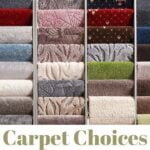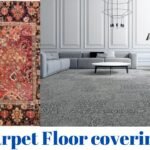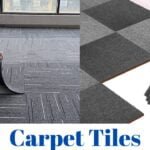
A Guide To Carpet Purchasing
Follow Our Carpet Buying Guide And Keep Your Sanity!
Carpet buying has lots of alternatives and a lot of cost varieties to offer. In reality it can be a bit frustrating in the beginning. If you follow our carpet buying guide you’ll have your house looking fantastic in no time and still keep your peace of mind.
First you require to consider the design of rugs that are offered and which space or spaces you want to put them in. Are your rooms conventional, contemporary, or are they spaces that are filled with antiques? , if your room is filled with beautiful antiques you will want to think about an Oriental or Persian style rug.. , if your space is modern conventional traditional contemporary may modern-day to choose a braided style of rugSelect
Select
One of primary consider picking a rug are the colors in and around the area that the rug will be positioned. Color straight impacts the feeling in the space. The lighter the color the more spacious the space will feel. The darker the color the smaller and more intimate the space will feel.
The majority of carpets are more cost-effective to preserve than smooth floor covering is. Carpets likewise have some acoustical values because they take in noises and for that reason improve the environment in your house or workplace. We live in an age of noise pollution triggered by cars and heavy machinery an other devices like phones, computers, faxes, cooling so carpet acoustic values can play a crucial function in you choice of flooring.
The cost of a carpet is identified by the kind of the pile which relates to the height, whether it is looped of cut, and the approach of setup needed. The greater the quality of carpet the better the energy benefits which supply insulation residential or commercial properties which make your room feel comfortable and warm.
Unlike wood floorings or linoleum which can be slippery, your carpets offers both anti slip residential or commercial properties and shock absorption. Low stack carpeting provides a good surface for wheel chairs. Due to the fact that they can be securely planted on the carpets and they will provide a non slip surface, they are also a good option for individuals using walking canes or crutches.
You may want the carpet to make a declaration or simply blend into the space. That’s totally up to you however remember absolutely nothing damages the look of a space faster than a loud bold carpet that looks out of location.
The resilience is extremely crucial for the look of the carpet. Just how much abuse will the carpet take before it begins to look used and requires to be replaced. Will it retard stains, resist soiling, and can it resist mildew. Are the colors quickly and is the carpet flame resistant. When you are going shopping for your new carpet, be sure to ask the sales person these questions.
Find out what your carpet is going to cost and be sure you get your quote in composing. Will you need under ordinary or under cushioning for the carpet? Discover out if the installer will take and get rid of away the old carpet or linoleum when he is ended up as well as tidy up all the left over pieces and bits.
Learn more about the extra treatments that are readily available for decreasing wetness or alkalinity and discover their expense. Find out what the expenditures of upkeep will be and what it would cost if your carpet was damaged and you needed repair work.
A few of the other things you ought to think of is the length of time the carpet you pick will remain in style. Keep in mind that over a couple of years the die lots can change and you will not be able to match the colors of the old carpet to the new. So if you are considering doing other rooms later on with the very same carpet it is much better to do all of it at once. Plus you can often get a much better price by doing this.
Look around at all the regional dealers to see if their cost is lower or higher and to compare services. When you visit their location, you can likewise get a better feel for their consumer service. If the price of the carpet is truly low compared to the other dealership that all things might not be equal so dig deeper, be aware. The carpet might look the exact same but it’s quality may not be as excellent. You might find the carpet is the very same but there are concealed bonus such as travel time dumping fees and labor costs to eliminate the old carpet. Make certain you are comparing apples to apples.
Only deal with a carpet business that has been around for a while. Those truck loads of carpets you see in the parking lots will definitely be a frustration to you in one way or another. Remember you will get what you pay for.
You may desire the carpet to make a declaration or just mix into the space. That’s entirely up to you but keep in mind nothing ruins the appearance of a space quicker than a loud brash carpet that looks out of location.
Discover out what your carpet is going to cost and be sure you get your quote in composing. If you are believing about doing other rooms later on with the exact same carpet it is much better to do it all at once. You may find the carpet is the very same however there are surprise bonus such as travel time discarding fees and labor costs to remove the old carpet.
Carpet Buying Guide
When buying a carpet, consider the following factors:
Material: Choose a carpet material that suits your needs and preferences. Common options include wool, nylon, polyester, and olefin.
Durability: Look for a carpet that can withstand the amount of foot traffic in your space. Consider the carpet’s density and pile height to gauge its durability.
Style: Decide on the carpet style that matches your aesthetic preferences. Choices include plush, Berber, loop, and patterned carpets.
Color: Select a color that complements your existing decor and personal taste. Consider factors such as lighting, room size, and the desired mood.
Maintenance: Determine the level of maintenance required for the carpet. Some carpets may require more frequent vacuuming, professional cleaning, or stain treatments.
Budget: Set a budget for your carpet purchase and explore options within that range. Keep in mind that higher-quality carpets may come with a higher price tag.
Installation: Decide whether you want to install the carpet yourself or hire a professional. DIY installation can save money, but professional installation ensures proper fitting and longevity.
Remember to research and compare different carpet brands, read customer reviews, and inquire about warranties before making your final decision.
Types of Carpet Fibers
The most common types of carpet fibers are:
- Nylon: Durable, resistant to stains and wear, and available in a wide range of colors.
- Polyester: Soft, stain-resistant, and available in vibrant colors. It is less durable than nylon.
- Olefin (Polypropylene): Resistant to stains, fading, and moisture, but not as durable as nylon.
- Wool: Natural, luxurious, and durable. It is more expensive than synthetic fibers and requires special care.
- Triexta (PTT): A newer synthetic fiber known for its durability, stain resistance, and softness.
Please note that each fiber has its own characteristics and benefits, so it’s important to consider factors like budget, foot traffic, and maintenance requirements when selecting carpet fiber for your needs.
Quality Carpet
When it comes to choosing quality carpet for your home or business, there are a few factors to consider. Here are some tips to help you find the right carpet:
Material: Look for carpets made from high-quality materials such as wool, nylon, or polyester. These materials are durable and can withstand heavy foot traffic.
Density: Check the density of the carpet. A denser carpet will be more resistant to wear and tear and will last longer.
Pile Height: Consider the pile height of the carpet. A shorter pile height is easier to clean and maintain, while a longer pile height can provide a softer and more luxurious feel.
Stain Resistance: Choose a carpet that has stain-resistant properties. This will make it easier to clean up spills and prevent permanent staining.
Warranty: Look for carpets that come with a warranty. A warranty will give you peace of mind and protect your investment.
Remember to consider your specific needs and preferences when selecting a quality carpet. It’s always a good idea to consult with a professional carpet supplier or installer to get personalized recommendations based on your requirements.
FAQs
What do I need to know before buying carpet?
Here are some key factors to consider before buying carpet:
1. Durability: Determine the level of foot traffic in the area where the carpet will be installed. Choose a carpet with appropriate durability to withstand the expected wear and tear.
2. Fiber Type: Different carpet fibers have different characteristics. Nylon is durable and stain-resistant, polyester is soft and affordable, while wool is luxurious but more expensive. Consider the pros and cons of each fiber type.
3. Pile Height and Density: Pile height refers to the length of the carpet fibers, while density is the closeness of the fibers. A higher pile height and density generally indicate a more luxurious and durable carpet.
4. Stain Resistance: Look for carpets that have stain-resistant treatments or inherent stain-resistant properties. This will make maintenance easier and help the carpet withstand spills and stains.
5. Maintenance: Consider the level of maintenance required for the carpet. Some carpets may require regular vacuuming, professional cleaning, or may be more prone to showing dirt and stains.
6. Budget: Set a budget for your carpet purchase and find options within that range. Remember to consider the long-term value and durability of the carpet when evaluating different price points.
7. Installation: Determine whether you’ll be hiring professionals for carpet installation or doing it yourself. This can impact the overall cost and quality of the installation.
8. Warranty: Check the warranty details provided by the carpet manufacturer. Understand what is covered, the duration of the warranty, and any specific care requirements to maintain the warranty.
Remember to measure the area accurately and consider your personal style and preferences when choosing the color and design of the carpet.
What are the three 3 types of carpet?
The three types of carpet are:
1. Cut Pile: Cut pile carpets have a smooth and even surface. They are durable and suitable for high-traffic areas.
2. Loop Pile: Loop pile carpets have loops of yarn that create a textured appearance. They are known for their durability and resistance to wear.
3. Cut and Loop Pile: Cut and loop pile carpets combine both cut and looped fibers to create unique patterns and designs. They offer a combination of durability and visual appeal.
What should I look for in carpet quality?
When assessing carpet quality, consider the following factors:
1. Fiber type: Look for carpets made from durable and resilient fibers such as nylon, polyester, or wool.
2. Density: Higher carpet density means more fibers per square inch, indicating better quality and durability.
3. Twist level: Opt for carpets with a higher twist level, as it indicates better resilience and resistance to crushing.
4. Weight: Heavier carpets usually indicate better quality, as they tend to be more durable and provide better insulation.
5. Pile height: A shorter pile height is generally preferable, as it is easier to clean and less likely to show footprints or wear patterns.
6. Backing: Check for a sturdy backing material that ensures stability and prevents stretching or bunching.
7. Stain resistance: Look for carpets that are treated with stain-resistant finishes to make cleaning spills easier.
8. Warranty: Ensure the carpet comes with a reliable warranty that covers manufacturing defects and wear.
Consider these factors when evaluating carpet quality to make an informed decision.
What type of carpet wears the best?
Nylon carpet typically wears the best.
























